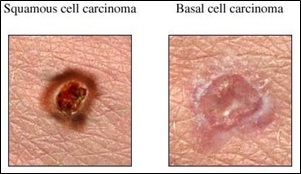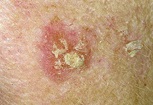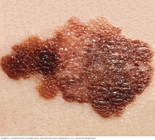When we talk about skin cancer, it is often associated with people with very fair skin or being exposed to constant sunlight. While there are some truths in it, in reality, the skin is a complex and largest organ with a variety of structures, types and complexions. Skin types may be dry or oily, and skin complexions range from very fair to olive to black-brown. Hence, skin cancer is anything but child’s play. The major skin cancers are basal cell carcinoma, squamous cell carcinoma and melanoma.
A rash is a generic term that describes skin changes. People might mistake early-stage skin cancer rash for psoriasis or a pimple. Some rashes may even be a sign of blood cancers or underlying medical conditions. However, most cases of rash are harmless. Chances of having skin cancer from a rash are rare. In fact, the most common cause of the rash is NOT cancer-related.
A person without the following risks generally has skin types that are less prone to develop skin cancer. Risk factors for developing skin cancers include:
- Fairer natural skin tone
- Skin that burns, reddens, freckles or pains easily in the sun
- Light-coloured eyes (blue or green), and blond or red hair
- Large and numerous moles
- A family or personal history of skin cancer
Regardless of whether you have any of the risks, one of the most recognised risks for skin cancer is the exposure to ultraviolet (UV) radiation. Most people get exposed to UV radiation from the sun, while others get it from indoor tanning. It is a myth that tan skin indicates good health. After being exposed to UV radiation, the skin produces melanin and moves it towards the outer layer of the skin, which makes a person look tan. Melanin is a skin pigment that is produced when skin cells signal that they have been injured by UV radiation. It is a coping mechanism of the skin to protect itself as dark pigments can block off UV radiation from damaging the cells. Prolonged exposure to UV radiation damages the DNA and causes skin cancers. In that sense, natural dark skins with greater pigmentations already have the protective layers of melanin, which could explain why certain skin cancers are almost absent in darker-skin populations. This is also why skin cancer generally develops in areas that are most exposed to sunlight, including the scalp, face, lips, ears, neck, chest, arms and hands. However, skin cancers can form in areas that are not sun-exposed, such as the palms, soles and genitals. Surprisingly, this usually happens to people with darker skin tone.
Basal cell carcinoma (BCC) arises from the basal layer of the epidermis. This cancer rarely spreads, but it is locally aggressive and invasive, destroying the surrounding skin and structures like the bone. BCC may present as a pearly bump, a pinkish flat lesion, or a bleeding and crusty sore that heals and recurs. BCC is more common in white population, especially in sun-exposed areas, and is very uncommon in the darker-skin population. Men are 30% more likely to develop BCC and adults over 55 years old have about a 100-fold chance.

Squamous cell carcinoma (SCC) arises from the outermost layer of the epidermis. It is commonly found in sun-exposed areas in people with fair skin whereas it is found in the legs and genital areas in people with dark skin. SCC may present as a firm, red nodule or a flat lesion with scaly, crusted surfaces.
Bowen’s disease is a very early form of SCC that is easily treatable. The main sign is a red scaly patch on the skin. If left untreated, it can transform into SCC. Another skin change which is a precursor of SCC is actinic keratosis (right picture) with an appearance of scaly, rough and bumpy spots.
Melanoma is the deadliest skin cancer as it can spread to other parts of the body and organs. It is the 5th most common cancer in the States for both genders. In men, it often occurs on the trunk and face, while in women, the lower legs. Melanoma can also be found on areas of the skin not exposed to the sun. Individuals with darker skin tones usually have melanoma on their palms, soles, or under the fingernails and toenails. Sometimes, it occurs on an existing mole that becomes cancerous. Moles that indicate melanoma look different than normal moles, with features of irregular borders, asymmetry, larger than 6mm across, present with a variety of colours, bleeding and change with time. Melanoma may also present as a painful lesion that itches or burns or dark lesions on your palms, soles, fingertips and toes.
In short, skin cancers affect people of all skin tones, including darker complexions. To be safe, make an appointment with your doctor if you notice any worrying changes to your skin regardless of your risk to develop skin cancer. Your doctor will investigate your skin changes to determine a cause.



